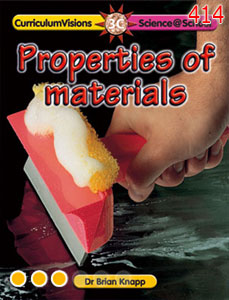Materials are substances made from something. The word has a very broad meaning. A material tends to have a use. So we would call wood a 'raw material' because it can be made into things, but it has not yet been processed.
When we use wood to make paper, paper is a material, but the wood has been treated, so it is no longer a raw material. The material called paper can be used to wrap food or to make a book.
There are many more examples, like this. Materials, of whatever kind, however, have properties such as strength and brittleness. That controls how they will be used and what for. Glass, for example, is not flexible, which is good for making windows. It is transparent and strong, which is also good. It has a very high melting point, which means the glass in our windows will not melt in the strong heat of the sun (as some plastics might). But it is brittle, meaning that if it is given a hard knock it might shatter.
Once we know about these properties, we can design things to take them into account. For example, the windows of vehicles use glass with very thin layers of plastic sandwiched between them. This means that if the glass shatters in an accident, the plastic will stop the bits from flying all over the place.







